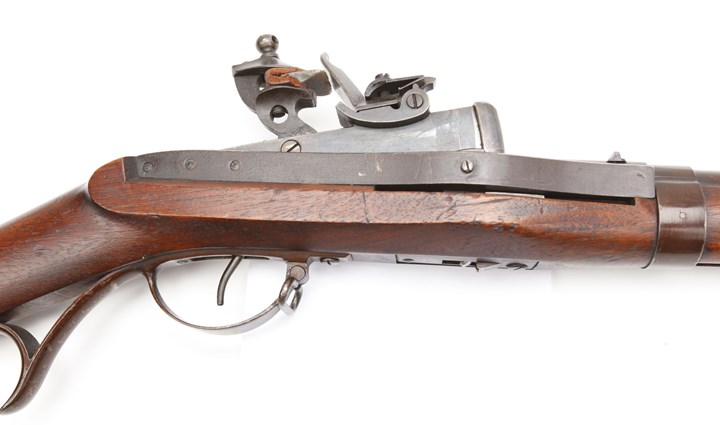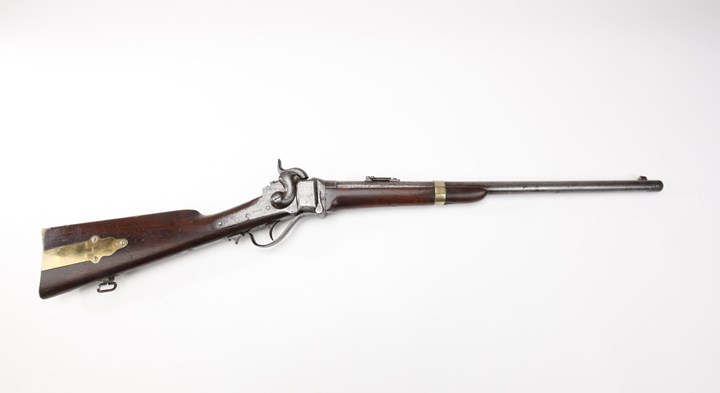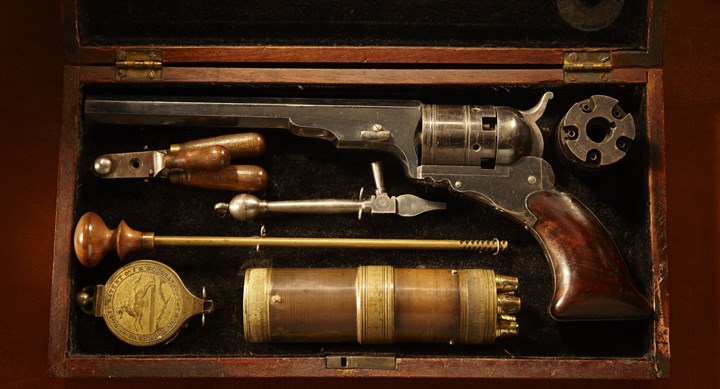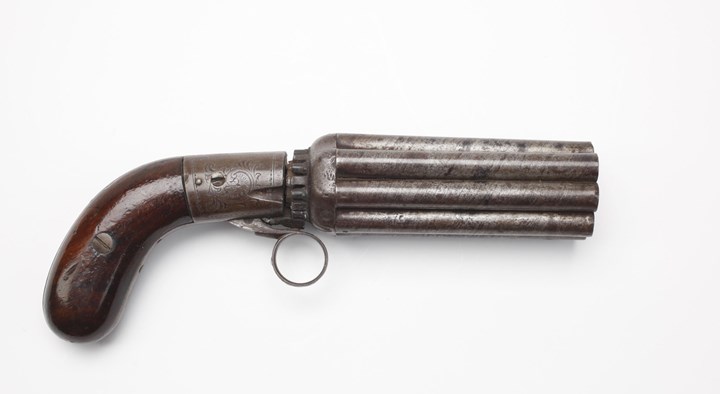Gallery

1 of 1
U.S. Hall Model 1819 Breechloading Flintlock Rifle
The Hall Model 1819 Breechloading Rifle marks two important firsts in firearms history. This model was the first breechloading rifle to be adopted by the United States as a regulation military arm...
Read more here

1 of 1
Sharps New Model 1859 Percussion Carbine
The Sharps, which used a nitrated linen or paper cartridge, was available in rifle or carbine models. Approximately 3,000 New Model 1859 Carbine produced early in the production run featured brass furniture and a brass patchbox...
Read more here
Read more here

1 of 1
Colt Holster Model Paterson Revolver No. 5
This early cased five-shot Colt handgun bears serial number 3 and was a presentation firearm specially engraved as a gift to a foreign dignitary. The Paterson Revolver No. 5 was also known as the "Texas Paterson," and are popularly associated with Jack Hays of the Texas Rangers. About 1,000 were manufactured between 1838 and 1840...
Read more here
Read more here


 More Like This From Around The NRA
More Like This From Around The NRA



